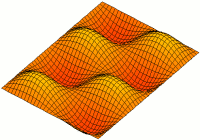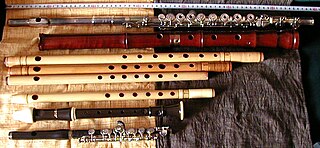
Steel guitar is a type of guitar or the method of playing the instrument. Developed in Hawaii by Joseph Kekuku in the late 19th and early 20th centuries, a steel guitar is usually positioned horizontally; strings are plucked with one hand, while the other hand changes the pitch of one or more strings with the use of a bar or slide called a steel. The earliest use of an electrified steel guitar was first made in the early 1930s by Bob Dunn of Milton Brown and His Brownies, a western swing band from Fort Worth, Texas; the instrument was perfected in the mid to late 1930s by Fort Worth's Leon McAuliffe, who played for western swing band Bob Wills and His Texas Playboys. Nashville later picked up the use of the steel guitar in the early days of the late 1940s and early 1950s "Honky Tonk" country & western music with a number of fine steel guitarists backing names like Hank Williams, Lefty Frizzell and Webb Pierce. The term steel guitar is often mistakenly used to describe any metal body resophonic guitar.
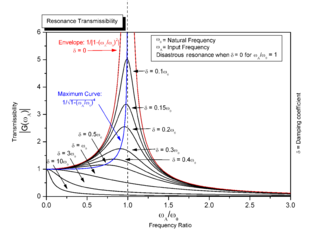
In mechanical systems, resonance is a phenomenon that occurs when the frequency at which a force is periodically applied is equal or nearly equal to one of the natural frequencies of the system on which it acts. This causes the system to oscillate with larger amplitude than when the force is applied at other frequencies.
Hornbostel–Sachs or Sachs–Hornbostel is a system of musical instrument classification devised by Erich Moritz von Hornbostel and Curt Sachs, and first published in the Zeitschrift für Ethnologie in 1914. An English translation was published in the Galpin Society Journal in 1961. It is the most widely used system for classifying musical instruments by ethnomusicologists and organologists. The system was updated in 2011 as part of the work of the Musical Instrument Museums Online (MIMO) Project.
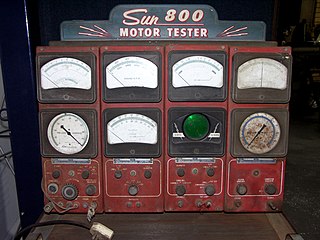
Engine tuning is the adjustment or modification of the internal combustion engine or Engine Control Unit (ECU) to yield optimal performance and increase the engine's power output, economy, or durability. These goals may be mutually exclusive; an engine may be de-tuned with respect to output power in exchange for better economy or longer engine life due to lessened stress on engine components.

Car tuning is the modification of the performance or appearance of a vehicle. For actual "tuning" in the sense of automobiles or vehicles, see engine tuning. Most vehicles stay the factory set up for an average driver's expectations and conditions. Tuning, on the other hand, has become a way to personalize the characteristics of a vehicle to the owner's preference. Cars may be altered to provide better fuel economy, produce more power, or provide better handling and driving.

In automotive engineering, an exhaust manifold collects the exhaust gases from multiple cylinders into one pipe. The word manifold comes from the Old English word manigfeald and refers to the folding together of multiple inputs and outputs.

On a two-stroke engine, an expansion chamber or tuned pipe is a tuned exhaust system used to enhance its power output by improving its volumetric efficiency.

An exhaust system is usually piping used to guide reaction exhaust gases away from a controlled combustion inside an engine or stove. The entire system conveys burnt gases from the engine and includes one or more exhaust pipes. Depending on the overall system design, the exhaust gas may flow through one or more of:

A flue pipe is an organ pipe that produces sound through the vibration of air molecules, in the same manner as a recorder or a whistle. Air under pressure is driven down a flue and against a sharp lip called a Labium, causing the column of air in the pipe to resonate at a frequency determined by the pipe length. Thus, there are no moving parts in a flue pipe. This is in contrast to reed pipes, whose sound is driven by beating reeds, as in a clarinet. Flue pipes are common components of pipe organs.
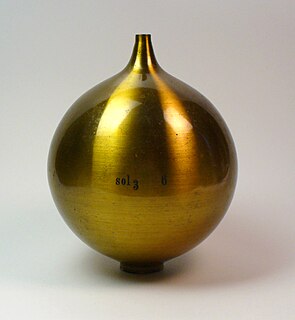
Helmholtz resonance or wind throb is the phenomenon of air resonance in a cavity, such as when one blows across the top of an empty bottle. The name comes from a device created in the 1850s by Hermann von Helmholtz, the Helmholtz resonator, which he used to identify the various frequencies or musical pitches present in music and other complex sounds.
Back pressure is a nonstandard term used to describe resistance or force opposing the desired flow of fluid through pipes. The term is misleading because pressure is a scalar quantity having a magnitude but with no direction associated with it. The obstructions or tight bends in a confined space such as an exhaust pipe oppose desired flow and reduce the discharge. In actual practice this type of pressure drop should be referred to as friction loss and pressure drop.
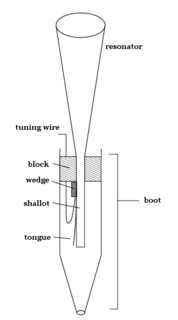
A reed pipe is an organ pipe that is sounded by a vibrating brass strip known as a reed. Air under pressure is directed towards the reed, which vibrates at a specific pitch. This is in contrast to flue pipes, which contain no moving parts and produce sound solely through the vibration of air molecules. Reed pipes are common components of pipe organs.

The Suzuki GSX-R1000 is a sport bike from Suzuki's GSX-R series of motorcycles. It was introduced in 2001 to replace the GSX-R1100 and is powered by a liquid-cooled 999 cc (61.0 cu in) inline four-cylinder, four-stroke engine.
This article describes the process and techniques involved in the tuning of a pipe organ. Electronic organs typically do not require tuning.

A four-stroke power valve is a device fitted to four-stroke engines that constantly adjusts the internal diameter of the exhaust system to better suit engine speed. At low engine speeds the wave pressure within the pipe network is low. A full oscillation of the Helmholtz resonance occurs before the exhaust valve is closed, and to increase low-speed torque, large-amplitude exhaust pressure waves are artificially induced. This is achieved by partial closing of an internal butterfly valve within the exhaust at the point where the primary pipes from the cylinders join. This junction point essentially behaves as an artificial atmosphere. The alteration of the pressure at this point controls the behavior of reflected waves at this sudden increase in area discontinuity. Closing the valve increases the local pressure, inducing the formation of larger-amplitude negative reflected expansion waves. A servo motor controlled by the ECU opens and shuts the valve. The valve goes from being almost fully closed at idle speed, through to fully open at higher engine speeds. This ensures superior low to mid-range performance, more linear power output and reduced exhaust noise levels while the valve is in its reduced opening position.
Aftermarket exhaust parts are intended to replace the factory fitted exhaust components of a car, motorcycle, or other motor vehicle in order to improve the performance, visual appeal, or sound of the vehicle. Generally, performance enhancements are achieved by reducing the back pressure of the factory exhaust system. Frequently a side effect of a free-flowing exhaust system is either a "different" sound, a higher noise level, or both, which is desirable to some people. Aftermarket exhaust parts can also be a styling upgrade by changes to the visible parts of the exhaust like the exhaust tips.

In automotive usage, scavenging is the process of pushing exhausted gas-charge out of the cylinder and drawing in a fresh draught of air or fuel/air mixture for the next cycle.
4-2-1 engine exhaust systems for automobiles are designed to ease the flow of exhaust gases of combustion leaving an internal combustion engine, thereby achieving optimal power output. Conventional exhaust systems, which are outfitted as standard components by automakers, are typically of the 4-1 type.
